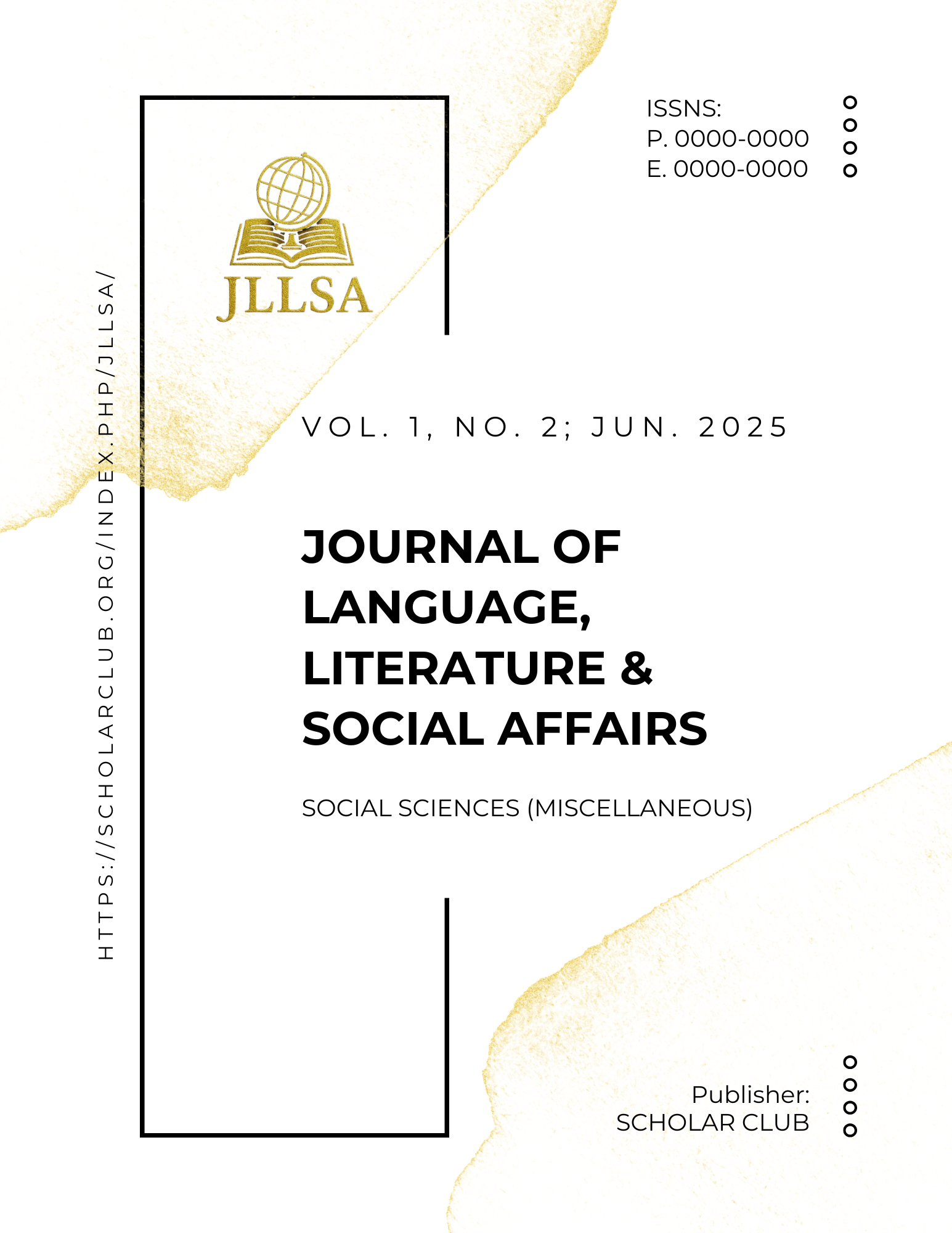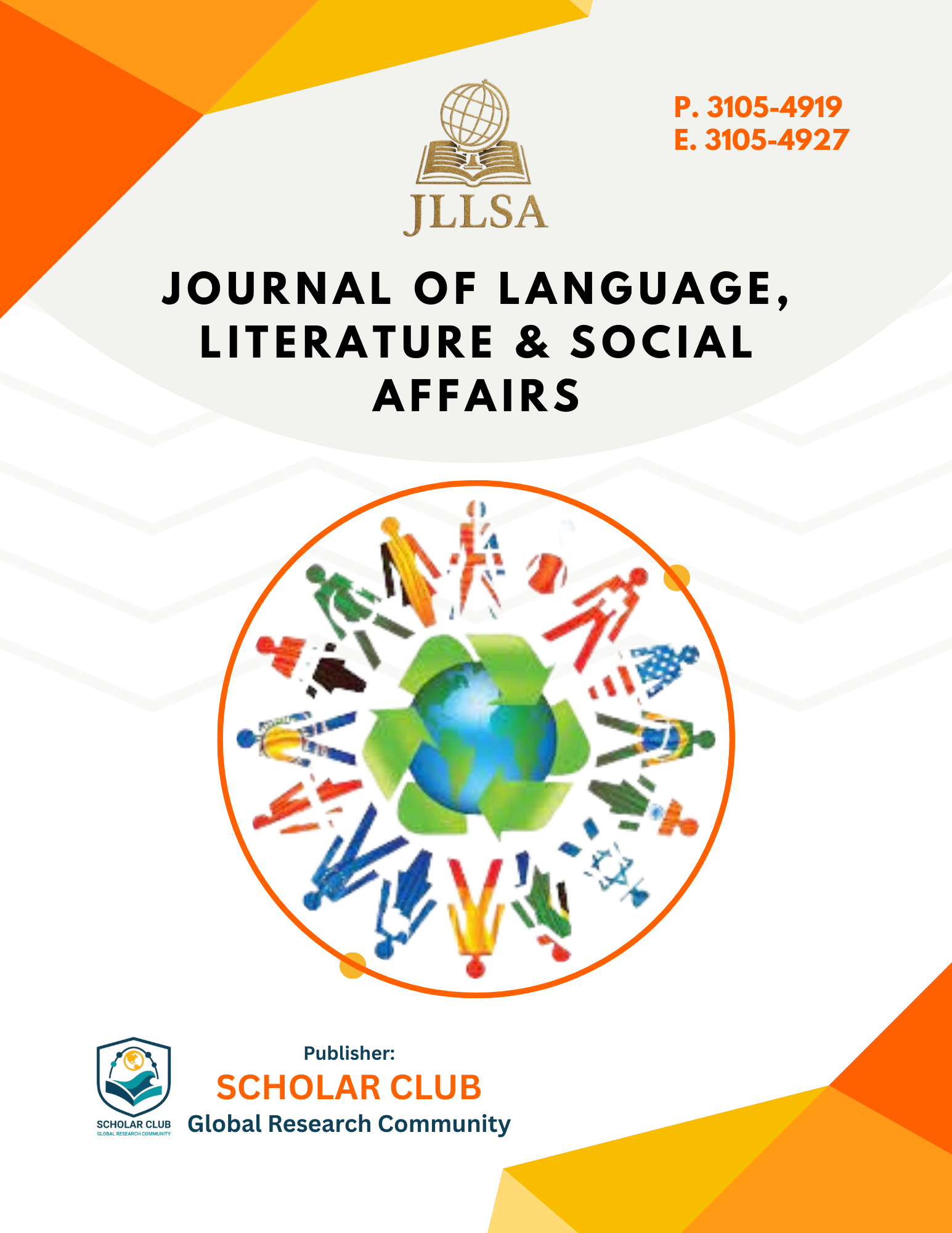Stylistic Devices and the Illusion of Reality: A Stylistic Analysis of Edgar Allan Poe’s 'A Dream Within a Dream’
Keywords:
emotionl division, geographical, phonological, qualitative method, perception and realityAbstract
Stylistic analysis is the use of linguistic aspects of a given text to illustrate how language and artistic functionality relate (Leech, 1969). The study examines A Dream Within a Dream, a poem by Edgar Allan Poe that is very much rooted in concepts of illusion and ontological uncertainty. The aim is to recognize and examine stylistic devices used by Poe, especially in the phonological, graphological, and lexical realm in order to convey the problem of contrasts between the perception and the reality. The method used for this research is qualitative method. The analysis of the poem is based on qualitative analysis of content based on Leech framework of styles with the emphasis being on direct lines of the poem to bring out the art of language Poe makes use of. The findings shows that the repetition, punctuation, and the symbolic diction created by Poe intentionally create atmosphere of emotional division and supports the theme of the blurring line between the dream and the reality.
Downloads
Published
How to Cite
Issue
Section
License
Copyright (c) 2025 Aiman Imran, Muhammad Hamad

This work is licensed under a Creative Commons Attribution 4.0 International License.







